|

|

|
Acne or pimple is the most common skin problem in the world. Acne usually disappears after the teens, but sometimes the problem persists. It is mostly irritating, when the disease shows in the face, and if it leaves scars. Causes of acne are many and usually occur due to changes in hormonal activity and it can also run in families.
There are three types of acne according to the severity. Acne comedonica is the least severe of them and manifests mostly with blackheads and mild inflammations. Acne papulopustulosa is the next level in severity with moderate inflammation. The most severe variety is acne nodulocystica , which is characterized by severe inflammation and usually leaves scars on the face.
|
Aside from scarring; its main effects are psychological, such as reduced self-esteem and depression. Early and aggressive treatment is therefore necessary to lessen the overall impact to individuals. At Radiance laser skin clinic we offer you maximum benefit by combining different modalities of treatment depending on the grade of acne lesions. |

Medical Management
Suitable medicinal plan is necessary to treat the active acne and prevent future breakouts. Certain lifestyle and diet changes will also help in controlling acne to an extent. High glycemic load diet and cow's milk have been associated with worsening acne. Most patients with mild acne can be treated with topical treatment (ointments, gels and cleansing lotions) and oral medications.
Comedone Extraction
Comedones are often seen in an acne skin. They are of two types; closed or white heads and open or blackheads. As the comedones are filled with acids, bacteria and other material, such as dead skin cells, scarring could be the end result, if left untreated. Comedone extraction removes any inflammation, pus and infective material from the lesions and thus helps to reduce any scarring from an acne lesion.
Microdermabrassion
Microdermabrassion is a non-invasive mechanical exfoliation treatment that removes the outermost layer of dead skin cells on the face, chest, and neck or anywhere on the body. It's an in-office procedure that is designed with the help of a gentle mechanical peeling process and to improve the skin regenerative capabilities and better control of specific skin conditions.
It can be used for skin rejuvenation, acne scars, sun damaged skin, wrinkles, oily pores, white heads & black heads, superficial pigmentation, post traumatic pigmentation, correction of atrophic striae, elimination of chicken pox marks and keloid scars.
Benefits of this technique are that there is no pain, no risk of allergy, no risk of scars and pigmentation and is a gentle treatment.
Chemical peeling
Chemical peels are usually used for acne, acne scars, black heads, white heads, sun damaged skin, blotchy pigmentation, fine wrinkles, loss of elasticity, large pores, age spots and dark spots. Different types of peels available are glycolic acid, salicylic acid, trichloroacetic acid, lactic acid and mandelic acid. It is chosen depending upon your skin type. Chemical peels act by dissolving glue that holds dead cells and by dissolving pore clogging materials thus exhibiting a smoother softer skin and reduces acne lesions. There is no significant pain or discomfort .Compared to other cosmetic procedures it is fairly less expensive also.
Subscission and punch elevation
Subscission is a method used for shallow acne scars with broad bases. This is performed using a hypodermic needle by inserting it through a puncture in the skin surface; and its sharp edges are maneuvered under the scar in a repetitive back and forth movement. The idea is to break the fibrous tissue that has secured the blemished skin to the underlying tissue. It frees up the skin surface from the underlying tissue. Patient may experience some bruising in and around the treated area which typically fades in a week or so.
Fractional laser
Pixel Er: Yag laser on Harmonyxl is very much beneficial for patients suffering from acne scars. This technology remodels collagen and thus skin tightens and the texture improves. Erbium laser beams actually go deep into the dermis and promote the growth of new collagen in the dermis. This new collagen fills the deficient dermis and plumps the skin beneath the depression. It can help to fill pitted scarring and small holes on the skin's surface. It is typically done in a series of 4-6 treatments, spaced 4-6 weeks apart, depending on your needs. Severe deep wounds caused by acne or surgery may require more treatments. Visible improvement usually is seen by the third month as it will take time for the synthesis of new collagen.
Dermal Fillers
Dermal fillers offer instant relief from acne scars. Dermal filler is a substance that is injected in to the skin to plump it up. It makes the skin look firmer and thus diminishes the appearance of wrinkles, fine lines and most of the types of acne scars. It fills in the sunken skin instantly and the pits start to match the skin's surface very soon after the injection.
Dermal fillers are injected in to the affected area, without using any anesthesia. The filler then stays at the injected spot and binds water to lift the particular skin area. The results are visible in less than 30 minutes. It is a relatively safe procedure as the filler hyaluronic acid is also found naturally in the skin. However, the effects are temporary and it will need to be repeated every few months. |

How does laser work?
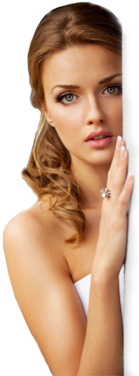 Erbium laser beams actually go deep into the dermis and promote the growth of new collagen in the Erbium laser beams actually go deep into the dermis and promote the growth of new collagen in the
dermis. This new collagen fills the deficient dermis and plumps the skin beneath the depression. It can
help to fill pitted scarring and small holes on the skin's surface. It can also help to reduce the appearance
of stretch marks.
How many laser treatments will I need?
It is typically done in a series of 4-6 treatments, spaced 4-6 weeks apart, depending on your needs.
Severe, deep wounds caused by acne or surgery may require more treatments for optimal results.
What special after-treatment care will I need?
It is important to follow post treatment instructions which may include some skin care products and
instructions on how to use them. Your skin will be more sensitive to ultra-violet light after the procedure,
so you must use sunscreens regularly.
How long will it take for results?
After fractional laser, you will see swelling the first two weeks after treatment but this swelling is just the
immediate effect of the treatment. Visible improvement usually is seen by the third month as it will take
time for the synthesis of new collagen.
Is Microdermabrassion suitable For Me?
Microdermabrassion can help you to get rid of superficial acne scars, blotchy skin, large pores and fine
wrinkles. It will also help you to improve skin texture and to get rid of fine wrinkles. All skin types and
colors can be treated with Microdermabrassion. If it is combined with chemical peeling results are far better.
How much time does Microdermabrassion require?
It hardly takes around 20-30 min. You can return for the work immediately after procedure. No downtime required.
Does Microdermabrassion hurt?
It is painless. Some may experience some itchiness or stinginess when aluminum oxide crystals come in contact with skin. Your skin may appear a little pinkish in the first day.
|

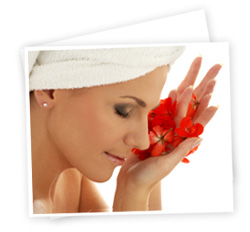 |
Aging is a process of becoming older, a process that is genetically determined and environmentally modulated. It is a natural process,
nobody can prevent it. For some, it can begin at an early age, while for others at a later age. Harsh rays of the sun, environmental damage, internal stress and disease all make skin the first victim to fall prey to aging.
The skin begins to thin out and loses its ability to repair itself with age. As a result you become prone to fine lines, crow's feet, laugh lines etc. Drooping eyelids and a sagging jaw line make things worse. No known substance can halt aging or extend life, but there are some techniques for improving the signs of aging.
Eat a balanced diet, avoid smoking, get regular health checkups, and avoid overexposure to the sun and the cold. Drink lots of water and keep a positive attitude towards life. |

Botulinum Toxin
Botulinum toxin is used for the treatment of facial wrinkles caused by muscular contractions. These wrinkles are commonly referred to as crow's feet, frown lines, and bunny lines. Treatment involves injecting very small amounts of Botulinum toxin directly into the underlying facial muscles to relax them. A tiny needle is used; the procedure is well tolerated and takes just a few minutes with no "down time" or prolonged recovery period. Botulinum toxin takes effect about 3 to 7 days after treatment. The improvement generally lasts about 3 to 4 months; the effect gradually fades as muscle action returns. Patients require re-injection at various intervals.
Dermal fillers
Dermal fillers are substances that are injected just below the surface of the skin to fill in lines, wrinkles, and scars. The most commonly used filler is hyaluronic acid. Hyaluronic acid potently binds to water and, when injected into the skin, volumizes, softens, and hydrates the skin. The most common areas treated are the smile lines around the nose and mouth, fine lines above the mouth, frown lines between the eyes, and acne scars. Both permanent and semi-permanent fillers are available.
Laser skin resurfacing
One of the most popular anti aging remedies is laser skin resurfacing, which improves the appearance of fine lines or wrinkles, scars and hyperpigmentation, primarily around the eyes and mouth. It can also be used to treat large areas of the face. They remove a layer of skin so that the new skin can flourish and fill in the wrinkles and crevices.
Laser skin resurfacing uses laser light to target the superficial and deep layers of the skin. In our centre we use Erbium YAG laser to treat deep wrinkles, sun damage and age spots. Through the heating of the deep dermis, fibroblasts are stimulated to form new collagen and elastin helping to bring increased turgor and thickness to the skin.
|
 |

Is laser skin resurfacing suitable for me?
Laser skin resurfacing is not suitable for patients with darker skin tones, who have active skin infections and those who are prone for keloids. Treatment helps to reduce the appearance of fine lines and wrinkles, acne scars, and abnormal pigmentations. It helps to treat the telltale signs of aging.
When can I to return to normal activities?
Recovery time after laser skin treatments varies from person to person. The usual recovery time is two weeks. Patients with darker skin tone require more recovery time. It also depends upon the general health and lifestyle of the patient.
What are the temporary side-effects of laser skin resurfacing treatment?
It depends on the extent of treatment. After laser skin resurfacing, patients typically experience reddening of the skin for several weeks. Other temporary side effects are swelling and discomfort. But it can be managed with proper medications and ice packs. Laser skin resurfacing may also result in the formation of crusting on the skin. This typically clears in about 10 days.

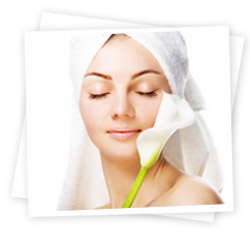
|
The skin naturally contains the pigment melanin. Sometimes due to prolonged sun exposure, hormonal factors or due to inflammation, the skin begins to produce abnormal quantities of melanin. This is what leads to discoloration or hyper pigmentation.
The sun, for one thing, as well as hormones and certain illnesses and medications are the usual culprits. The most common skin pigmentation conditions are freckles or sun spots and lentigenes, post inflammatory hyper pigmentation, periorbital melanosis, melasma, nevus or birthmarks and tattoos.
Whatever be the condition sun protection plays a major role. It is possible to reduce pigmentation to a great extend with the facilities available at our centre. |

Chemical peeling
Chemical peels are usually used for sun damaged skin, blotchy pigmentation, fine wrinkles, loss of elasticity, large pores, age spots and dark spots. Along with alpha hydroxy acid peels like glycolic acid and lactic acid, other peels like salicylic acid, trichloroacetic acid peels are also available.
The type of chemical peel is chosen depending upon the skin type and degree of pigmentation. More sittings will be required depending upon the severity. Different types of facial masks and creams hasten the improvement.
Q-Switched Nd:YAG laser
Q-Switched Nd:YAG hand piece on HarmonyXL is useful for tattoo removal and other pigmented lesions. Tattoo ink and natural pigmentation like melanin absorb short pulse duration/high peak energy Q-switched pulses so quickly that they create a photo-acoustic effect within the pigment clusters. This effect breaks down the ink into much smaller particles that can be more easily removed by the body's natural filtering system. Tattoo removal typically requires six to eight or more treatments, spaced approximately four to eight weeks apart.

What is the advantage of this laser?
The lesion can be treated precisely and accurately with minimal complication. The normal surrounding tissue is spared and preserved during the treatment. The improvement is fast and complete.
What happens during and after treatment?
You may feel some pain during the treatment. The pain is mild and is similar to snapping the skin with rubber band. Anesthetic cream can be applied before the treatment. The treated area may form crust that may disappear after 3-7 days. Use sunscreen regularly once the crust disappears.
What is the possible side effect of laser?
Temporary pigmentation changes may occur depending on the skin type, but that will improve after 2-4 weeks.
How many laser treatment sessions are required?
Series of treatment sessions give you maximum results. Usually 4 to 6 sessions are required depending on your skin and type of lesion treated. Each session lasts for 10-30 minutes. Treatments are spaced six to eight weeks apart.
How long does it take to have a chemical peel?
Often referred as "lunch time peel" it will only take around fifteen to thirty minutes. Normal activities may be resumed immediately.
Is a chemical peel painful?
Patients only feel a mild stinging sensation during light or medium chemical peels. Upon neutralizing the peel, the skin feels fresh and smooth without discomfort.
What precautions should I take after a chemical peel?
Sunscreens should be used regularly for few days as your skin will be more sensitive to ultraviolet rays of the sun during this time. |
 |
How many chemical peels should I have and how often is it recommended?
For optimal results peeling should be done every 2 weeks. Depending on your skin tone and purpose of peel you will need around 6 to 7 sittings. Peeling on a regular basis will help to maintain a healthier and radiant skin.

Excessive hair growth is common and often accompanied by severe anxiety and social stress. Hair removal is usually done for hirsutism which is defined as excessive and increased hair growth in women in locations where the occurrence of terminal hair normally is minimal or absent.
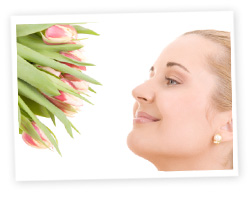 |
It refers to a male pattern of body hair (androgenic hair) and it is therefore primarily of cosmetic and psychological concern. The cause of hirsutism can be either an increased level of androgens (male hormones) or an oversensitivity of hair follicles to androgens. Male hormones such as testosterone stimulate hair growth, increase size and intensify the pigmentation of hair.
It can range from a few dark chin hairs to a miniature mustache and sideburns to a full beard and hairy chest. Women often feel unfeminine, embarrassed by the hair, and it can affect job performance, mental health, and desire to interact with others. Actual causes should be evaluated by conducting blood tests, pinpoint the specific origin of the abnormal hair growth.
|

Electrolysis
Permanent removal of unwanted body hair with little or no discomfort can be achieved with this method. An electric current is applied with a very fine needle-shaped electrode, or metal probe into each hair follicle to destroy the root. Lasers target melanin in the hair follicle. So cannot act upon grey hairs. With electrolysis grey hairs can also be removed. Usually done along with lasers for better results.
Painless Super Hair Removal
Pain-Free, Hair-Free Laser Hair removal can now liberate you from daily shaving and tedious plucking. With Pain-Free, Hair-Free treatment you can forget about waxing. This breakthrough, revolutionary technology has been described as one of the most comfortable hair removal options available. HarmonyXL can deliver fast, effective results for permanent hair reduction on all skin types, including tanned skin. This Super Hair Removal hand piece now has contact cooling and uses IN-Motion technology for virtually pain-free procedures with no downtime.
|
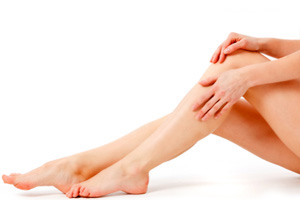 |

How does it work?
When the laser beam is projected at the skin and the hair follicle, heat is created and is targeted towards the melanin in the hair follicle and damages the follicle. The laser works by disabling hairs that is in their active growth cycle at the time of treatment. Since other hairs will enter their growth cycle at different times, several treatments are necessary to disable all of the follicles in a given area.
Is Laser Hair Reduction Permanent?
It is permanent hair reduction rather than permanent hair removal. It is possible to experience minimal re-growth in an area previously treated by normally dormant hair, at which time you may want to do an occasional touchup.
Is it painful?
Pain is compared to a rubber band snapping against the skin. Compared to waxing the treatment has very little discomfort. Everyone's pain tolerance is different. If it's uncomfortable, we can apply a local anesthetic cream before procedure.
How long does it take?
Every client will need a minimum of six treatments every four to six weeks. With each treatment, the hair gets finer as the light targets and destroys hair follicles. Additional treatments may be necessary for some client as there are hormonal changes and dormant hair follicles in the body.
What Precautions to take in between treatment Sessions?
The patient should not wax or pluck hair 4 weeks prior to treatment. Shaving or trimming the area is fine.
Which areas of the body can be treated?
Any area of the body can be treated; the most common areas are the arms, legs, face (moustache, sideburns) neck, back, chest, feet, and armpits.
What are the side effects?
It is a relatively safe procedure. Side effects if any are usually minor. Some redness and swelling can be expected around the treated hair follicles. This actually indicates that hair follicle has responded to treatment.
Is this FDA cleared?
Yes, it is FDA cleared and Safe.
|
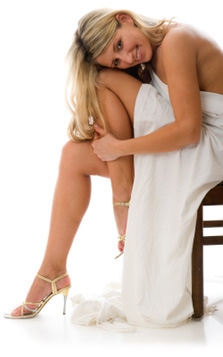 |

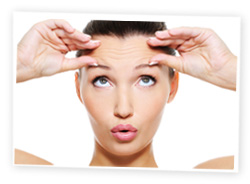 |
It's a truth that every human longs to remain young and beautiful forever. This new technology of Botox injections and dermal fillers has fulfilled this dream. Although the results are temporary, these treatments have gained popularity all over the world because of the simplicity of the procedure and fast immediate results. It promises you a more youthful appearance with no downtime, no anesthesia, and no going under the knife. Now it's time to fight photoaging.
|

Botulinum toxin
Botox used to reduce wrinkles is a sterile and purified version of the Botulinum Toxin A. When the toxin is injected into the muscle, it works to block the nerve impulses, temporarily paralyzing the muscles that cause wrinkles, thereby causing them to relax more. The net result is that the process of wrinkle formation is reduced. A smoothing effect is seen almost immediately and it continues to improve over the next few days.
The full effects of Botox injections can be seen in 5-7 days. Results may vary on individuals, depending on the severity of wrinkles and the strength of muscles treated. The results last from three to six months after which most patients gradually return to their former state. Normally, Botox Injections should be repeated every 3-4 months. Botox treatment is completely safe and can be taken by anyone whose age falls in 18 to 65. No adverse long-term effects of Botox have been observed so far. However, some short-term problems may arise like headache, temporary eyelid droop, nausea, squint/double vision, and facial pain, redness at the injection site and muscle weakness. The cost of this treatment depends on the number of units used and the number of areas treated.
Dermal fillers
Perhaps nothing is more gratifying for cosmetic patients than having an immediate correction of rhytides or scars as a result of the injection of dermal filler. It's an effective tool in rejuvenation, either as a stand-alone treatment or in combination with other procedures such as Laser resurfacing or Botulinum toxin. It is also called as liquid lift and uses injectable dermal fillers to plump up the skin from inside out, thereby filling in wrinkles, restoring facial fullness, and re-contouring features to improve the appearance of the aging face. There are many dermal filler options available to patients today. At our center we use hyaluronic acid as dermal filler.
Hyaluronic acid is the most prominent glycosaminoglycan in the skin. Hyaluronic acid potently binds to water and, when injected into the skin, volumizes, softens, and hydrates the skin. In addition to these benefits, it plays a role in cell growth, membrane receptor function, and adhesion. Hyaluronic acid stabilizes intercellular structures and produces the viscoelastic network for collagen and elastin fibers to bind together. As seen with photoaging, these connections fail, thus resulting in disorganized clumps of collagen and elastin. These benefits make hyaluronic acid an excellent dermal filling agent. Because hyaluronic acid is identical in all species, the risk of allergy is remote. It can be used on nose, lips, chin and hands.
Chemical peels
Chemical peel is a treatment technique used to improve and smoothen the texture of facial skin using a chemical solution that causes the skin to blister and eventually peel off. The regenerated skin is usually smoother and less wrinkled than the old skin. Chemical peels stimulate the production of new cells, tighten and tone the skin, and decrease the appearance of fine lines and wrinkles. They also help in lightening acne scars. If you really want soft, smooth and flawless skin, chemical peels are the safest bet.
The number of sittings required by an individual depends on the severity of the problems being addressed. Peels are also known as "lunch time procedures" since they only take between 20 to 40 minutes. Usually six to eight such peels are required at weekly or fortnightly intervals to get desired results. One important precaution after undergoing treatment is protection from exposure to sun. Ensure that you apply sunscreen in the right way, 15 minutes before going out in the sun and reapply after every three hours because after the peel you get a new, smooth skin that is sensitive to direct sunlight. There are several types of peels. The choice of the most suitable chemical peel for an individual is determined by the patient's skin texture, type, problems and many other similar aspects.
Alphahydroxy acids (AHAs) - These are the gentle peel formulas and are used to remove fine wrinkling, dry areas, uneven pigmentation, and acne. AHAs include glycolic, lactic, lactic acid or fruit acids. Several peels may be needed to get the desired effect.
Trichloroacetic acids (TCAs) - For a stronger peeling, TCAs are used. These peels remove surface wrinkles, superficial blemishes, and pigment problems. They can be used on the neck and other body areas too. For the results to last for a longer period, the process has to be repeated several times.
Salicylic acid- it is a medium depth peel which is mainly used for acne skin and wart removal. It can also be used for repairing damaged skin.

Is Botulinum toxin and dermal fillers safe?
Yes, it is safe. No serious side effects have ever emerged in relation to the use of this drug. Treatment is US FDA approved.
When and How Long Does Botulinum Toxin Work?
The initial effects of treatment become visible within 48 to 72 hours. The maximum effect is reached in approximately 3 weeks. The effect of treatment generally lasts for 3 to 4 months. Re-treatment is then required.
Are there any contraindications for Botulinum toxin injection?
Pregnancy, breast feeding, myasthenia gravis, and blood coagulation disorders are some of the contraindications for this injection. Please ensure you inform the Doctor if you have any of the above mentioned conditions.
Is it expensive?
The cost of this treatment depends on the number of units used and the number of areas treated.
|

|


|
In association with reputed plastic surgeons various cosmetic surgeries can also be done at our centre at an affordable cost.
Liposuction: removal of unwanted local fat from abdomen , hips , thighs, buttock , calf and arms
Tummy tuck : abdominoplasty
Breast surgery : procedures like breast augmentation , reduction and asymmetry correction can be done
Gynocomastia : correction of enlarged male breast.
The various face cosmetic surgeries available are
Forehead lift: for sagging forehead
Blepheroplasty :correction of baggy eyelids
Rhinoplasty : improves both appearance and function of nose
Otoplasty: various ear lobe reconstructive surgery
Mentoplasty: chin and cheek deformity correction
Lip reduction and augmentation
Face implants
Hair transplants to scalp , eyebrow , moustache , beard areas
Scar revision surgeries
Neck lift for sagging neck, fold correction.
|

Liquid Nitrogen cryo surgery
Cryotherapy, also known as cryosurgery, is a commonly used in-office procedure for the treatment of a variety of benign and malignant lesions. The general advantages of cryotherapy are its ease of use, its low cost, and its good cosmetic results. This technique uses an extremely cold liquid or instrument to freeze and destroy abnormal skin cells that require removal. Cryotherapy is used to destroy a variety of benign skin growths, such as Warts, Molluscum contagiosum, Cysts, Keloids, Milia, Skin tags as well as pre-cancerous lesions like Actinic keratoses, Leukoplakia and Bowens disease. A second application may be necessary depending on the size of the growth.
Radio surgery and electro surgery
Itís a simplified and affordable technique of coagulation and fulguration to treat wide variety of skin disorders with excellent results. Lesions which can be treated are Acrochordons (skin tags), Moles and freckles, excision of cysts, Seborrhoeic keratosis, Xanthelasma palpebram, Pyogenic granuloma, Acne keloidalis nuchae, Dermatofibroma, Verrucae(warts), Molluscum contagiosum and Epidermal verrucous nevi. Radiosurgery offers better cosmetic results than Electrosurgery.
Patch testing
Patch Testing helps identify which substances may be causing allergic contact dermatitis in a patient. It is intended to produce a local allergic reaction on a small area of your back where the diluted chemicals are planted. The chemicals included in the patch test kit are the offenders in approximately 85-90 percent of contact allergic eczema and include chemicals present in metals (e.g. nickel), rubber, leather, hair dyes, formaldehyde, lanolin, fragrance, preservative and other additives. This results in a permanent solution for the dermatitis in most of the cases.
Vitiligo Surgery
Vitiligo is a pigmentation disorder which leads to creating visible white patches on the skin in different parts of the body. The choice of therapy depends on the number of white patches: their patches, location, sizes and how widespread they are. In majority of the cases, medical therapy only achieves stabilization of the vitiligo patch but fails to cause repigmentation. However, repigmentation in cases of 'stable vitiligo' can be achieved by various dermatosurgical techniques. These include punch grafting, blister roof grafting, split thickness, skin grafting etc.
Nail surgery
Nail surgery is performed, to relieve pain, and to correct or prevent anatomical deformities of the nail under local anesthesia.
Earlobe Repair
Ear lobe surgery done for torn ear lobe which usually occurs after the pierced hole widens over time from the weight of earrings or plugs. Once the ear lobe is weakened, and if you continue to wear heavy earrings it can result in a tear. Other types of tears can also occur, such as earrings being accidentally pulled through the lobe. When your ear lobe is torn, it usually requires surgery to repair the wound. This is done by bringing the two separated portions of the ear lobe together and might involve stitches during the surgery.
|
|
